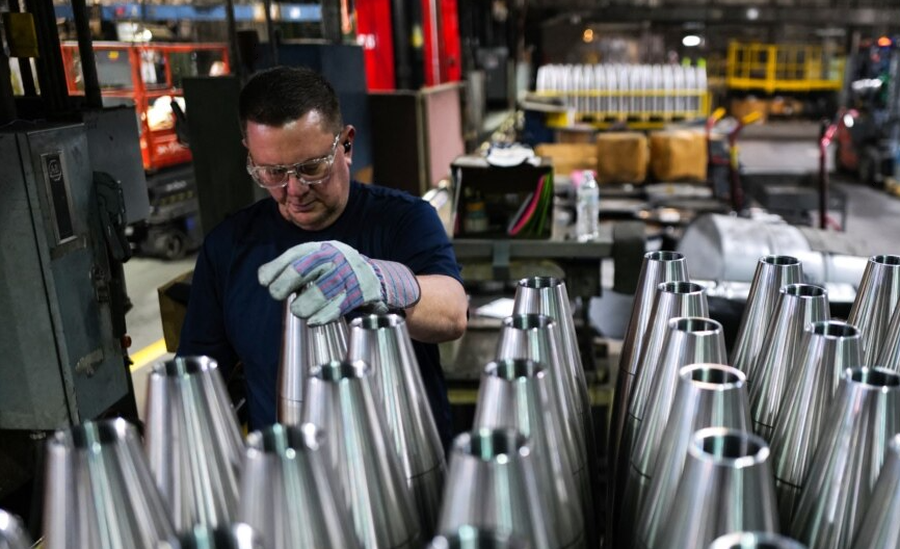
On May 27, the European Union will officially approve its €150 billion scheme to increase defense spending within the bloc.
The so-called SAFE (Security Action for Europe) regulation was first proposed in March by the European Commission, in response to calls from member states for financial and political support in meeting new defense objectives pushed forward by NATO – and to potentially be a replacement for Ukraine, should the United States shift its focus elsewhere.
The final regulation, seen by Radio Free Europe, clearly states that "the threats posed by Russia and Belarus are of particular importance and urgency" and must be responded to swiftly.
Due to the time needed to develop protective products and increase industrial production capacity across the EU, the regulation also stresses that it will be "vital" for the European bloc to launch support for member states "as soon as possible, so that they can place orders very quickly."
Brussels initially responded to member states' calls by activating the national exemption clause for EU military spending, meaning that spending on items such as weapons and ammunition will not be included in the bloc's punitive mechanism for countries that breach EU spending limits.
This created fiscal space – but member states also need money as quickly as possible.
With several capitals keen to quickly access the proposed funds – and without the need for unanimity or approval from the European Parliament – EU ambassadors approved the new law on May 21, with only Hungary voting against.
The new scheme works in the same way as the EU's COVID-19 recovery program, which was worth 800 billion euros.
For SAFE, the bloc will use its top-tier credit rating (AAA) to raise €150 billion on the markets and then lend it to member states. This would be much cheaper than if most EU countries tried to generate the funds themselves by borrowing individually.
Five EU countries – Denmark, Germany, Luxembourg, the Netherlands and Sweden – currently enjoy a AAA rating, so they will likely not need to participate in the scheme, leaving a larger share of potential loans to poorer countries.
Attached conditions
The fact that the loans have a maximum term of 45 years, do not have to be repaid for the first decade, and that countries will not have to pay VAT on purchased equipment are other advantages that Brussels hopes will spur a boom in defense spending in Europe.
But, of course, there are also some conditions attached.
First, many southern EU member states, already burdened with other debts, complain that – unlike the COVID recovery scheme, which also included a grant component – this initiative is exclusively a loan, which will further burden already strained public finances.
SAFE also aims to promote joint defence procurement between countries, with the European Commission wanting to use this instrument to create a genuine European defence market instead of the fragmented national one that currently exists.
Countries can apply for loans without joining forces with another country only during the first year. After that – from the end of 2026 to 2030 (when the scheme ends) – two or more countries must apply together.
To ensure a fair distribution of funds, the share of loans granted to the three member states with the largest allocation should not exceed 60 percent of the total of 150 billion euros allocated to this scheme.
Who can participate?
The main issue in the last month has been who can participate in SAFE – balancing member states' differing desires to increase domestic production with the reality that not every component can be produced in the EU.
For starters, the European Free Trade Association (EFTA) countries – Iceland, Liechtenstein, Norway and Switzerland – are included in the scheme. The same applies to EU candidate country Ukraine.
The regulation justifies their inclusion by citing “the close partnership of these countries with the Union in industrial defense production” and the fact that “Ukraine is directly facing Russia’s ongoing war of aggression.”
The 'Brussels Compromise'
However, there is still dissatisfaction.
The United States, in particular, has complained about being excluded from this process.
And many EU member states – interested in maintaining transatlantic military ties while also involving other close partners in aspects of SAFE – have lobbied to open the scheme to further foreign participation.
In the end, a “65-35 rule” was reached. This means that 65 percent of the value of the arms purchased must be generated in the EU, the four EFTA countries or Ukraine. The remaining 35 percent can be produced elsewhere, for example in the United States.
But, the situation becomes a little more complex.
If a country has a Security and Defense Partnership (SDP) with the EU, 65 percent of the value of weapons can come from that country.
The United Kingdom recently signed such an agreement with the bloc, and Albania, Japan, Moldova, North Macedonia and South Korea also have similar agreements.
Ultimately, as one EU official told Radio Free Europe, the outcome is “a classic Brussels compromise” – a pretty big deal has been reached, but the money won’t start flowing until everyone, including many outside the family, gets their fair share. (A2 Televizion)











